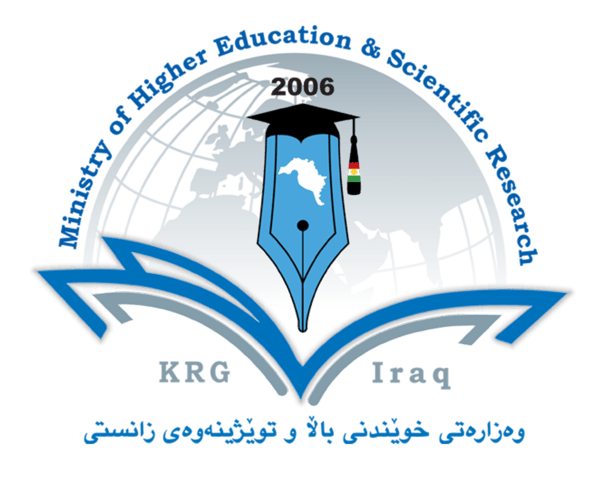Ingested Foreign Bodies in Erbil
DOI:
https://doi.org/10.56056/amj.2015.02Keywords:
esophageal, foreign bodies, PharyngealAbstract
Background and ObjectivesNinety-two patients with a history of ingested foreign bodies (FB) were seen between Jan 2002 to January 2010 in an otolaryngology clinic in Erbil. The majority of cases were children. Food particles and animal bones were found to be the most common types of foreign bodies. Cases are managed by endoscopic removal of the FBs under General anaesthesia. Complications were rare except in two cases. The management of these cases is discussed. Rare foreign bodies of interest is reported .it is recommended that children under 5 years should be supervised and not be left alone to feed themselves. A patient who has denture shall take enough time with his meal and take small bullous chewing them properly. Patients who have swallowed sharp , irregular FBs must be managed by senior staff with good skill in endoscopy.
Patients and MethodsThis is a prospective study where data of cases collected and saved on computer for future analysis . Ninety two patients with history of recent foreign body ( F B ) ingestion were seen in an Otolaryngology clinic in Erbil. The detail of history of each case including age , sex, social status , symptoms and state of ingestion of the foreign body were recorded. All patients had clinical and endoscopic examination of oro and hypopharynx to localize the F B . Patients in whom the F B was not localized by clinical examination, were sent for radiological imaging of the neck , chest and upper abdomen to identify the type of FB and the site of impaction. Barium swal- low was done only with high suspicious of ingested radio-translucent FBs when the FB could not be localized with plain X -ray. Patients with F B in hypopharynx and oesophagus were admitted and prepared for diagnostic and therapeutic en- doscopic examination under general anaesthesia ( G A ) with endotracheal intubation. Imaging study wasrepeated immediately before endoscopy specially with smooth ingested FBs . The type of the F B removed was recorded . Patients who had uneventful endoscopic examination and those with smooth F B were discharged home on the same day, while patients who had ingested sharp F B , or had neglected and infected F B or had excess manipula- tion during endoscopic removal of the F B were kept under observation for 24 hours . Cases who developed any complication and required farther intervention were sent for new radiological imaging to confirm the complica- tion occurred and treated accordingly .
ResultsTotal of 92 patients with F B in pharynx and oesophagus were recorded . Age ranged from 12 months to 70 years , age distribution charted in (chart 1). Majority of them (47) were children in the first decade of life . 17 cases were above 45 years. Sixty five were male and 27 female . Painful swallowing was the presenting symptom in 90 cases . Progressive dysphagia and vomiting was present- ing symptoms in 2 cases . FBs were swallowed either ac- cidentally or with meals . Two patients swallowed sharp FBs ( needle and glass ) in suicidal attempt. The types of ingested FBs are listed in (table 1).
Downloads
References
Dahshan A. Management of ingested foreign bodies in children. J Okla State Med Assoc. 2001;94:183–6.
Arana A, Hauser B, Hachimi-Idrissi S, Vanden- plas Y. Management of ingested foreign bodies in childhood and review of the literature. Eur J Pediatr. 2001;160:468–72.
S A TAWFIQUE ; Ingested foreign bodies in Arbel, Iraq. Kurdistan Medical journal.1994;1(1):3- 8.
Conners GP: Foreign Body Ingestion, Medscape, Jul 2010
Cheng W, Tam PK. Foreign-body ingestion in chil- dren: experience with 1,265 cases. J Pediatr Surg. 1999;34:1472–
Byerley JS. Pediatric emergencies in the family prac- tice clinic. Clin Fam Pract. 2003;5:445–66.
Gilger, Jain & McOmber (2012). Foreign bodies of the esophagus and gastrointestinal tract in children. Up- ToDate.
Rebhandl W, Milassin A, Brunner L, et al: In vitro study of ingested coins: leave them or retrieve them? J Pediatr Surg. 2007 Oct;42(10):1729-34.
Soprano JV, Mandl KD. Four strategies for the man- agement of esophageal coins in children. Pediatrics. 2000;105:e5.
Gilger M, Jain A, McOmber M. Foreign bodies of the esophagus and the gastrointestinal tract in children. (Last updated January 4, 2009) In: UpToDate,
Ferry G, Singer J, Hoppin A (Ed), UpToDate, Wellesley, MA, 2010. Kay R, Wyllie R. Pediatric For- eign Bodies and their Management. Current Gastroen- tereology Reports. 2005; 7: 212-218
Haidary A, Leider JS, Silbergleit R ; Unsuspected swallowing of a partial denture. AJNR Am J Neurora- diol. 2007 Oct;28(9):1734-5. Epub 2007 Sep 20.
Susini G, Pommel L, Camps J: Accidental inges- tion and aspiration of root canal instruments and other dental foreign bodies in a French population. Int Endod J. 2007 Aug;40(8):585-9. Epub 2007 May 26.
Yang MC, Lee SW, Huang YG, et al: Acute medi- astinitis resulting from an unsuspected fish bone--case report. Int J Clin Pract Suppl. 2005 Apr;(147):45-7.
Louie JP, Alpern ER, Windreich RM: Witnessed and unwitnessed esophageal foreign bodies in children. Pediatr Emerg Care. 2005 Sep;21(9):582-5.
De Roo AC, Thompson MC, Chounthirath T, et al. Rare-earth magnet ingestion-related injuries among children, 2000-2012. Clin Pediatr (Phila) 2013; 52:1006.
Abbas MI, Oliva-Hemker M, Choi J, et al. Mag- net ingestions in children presenting to US emergency departments, 2002-2011. J Pediatr Gastroenterol Nutr 2013; 57:18.
Eisen GM, Baron TH, Dominitz JA, Faigel DO, Goldstein JL, Johanson JF, et al. Guideline for the man- agement of ingested foreign bodies. Gastrointest En- dosc. 2002;55:802
Downloads
Published
Issue
Section
License
Copyright (c) 2022 Saleh Ahmed Tawfique

This work is licensed under a Creative Commons Attribution-NonCommercial-ShareAlike 4.0 International License.
The copyright on any article published in AMJ (The Scientific Journal of Kurdistan Higher Council of Medical Specialties )is retained by the author(s) in agreement with the Creative Commons Attribution Non-Commercial ShareAlike License (CC BY-NC-SA 4.0)













